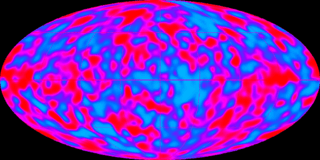Last month Max Tegmark from MIT published a paper on consciousness. The curious thing here is that Tegmark is a physicist and they don’t traditionally get mixed up in theories of consciousness. His paper though is very timely as it reflects a growing movement in neuroscience towards a fundamental shift in how we view the issue.
Tegmark proposes that we view consciousness as a state of matter. He means this literally, just like a gas, liquid or solid the properties we see depend on the arrangement of atoms, not on the types of atoms per se. Understanding the physical parameters that describe this state of consciousness will have enormous repercussions in physics, neuroscience and philosophy and ultimately our understanding of ourselves and our place in the universe. In physics we do not understand why we perceive the universe as we do, we cannot calculate it for a given observer, in fact we cannot really identify all of the observers in a given system because consciousness is not defined and we do not know what it implies. Understanding this would provide new tools in understanding the type of universe we live in. Tegmark calls this state of matter “perceptronium” which, perhaps intentionally, would not sound out of place in the Marvel universe.
In his paper he refers to the neuroscientist Giulio Tononi who describes consciousness in terms of Information Theory. Specifically he defined consciousness as Integrated Information and by describing it in such terms opens the problem up to physicists like Tegmark. He essentially proposes a mathematical framework for understanding consciousness and asking the types of questions scientists ask in all other fields of study. He provides a theory to experimentally challenge. Tononi also likes to think of consciousness in the form of Integrated Information as fundamental and describes a universe that can be described as mostly empty except for rare bright spots. These spots however are you and I and not stars and galaxies as you might expect.
Taken together these two lines of reasoning have many implications. The first is that no “secret sauce” is necessary. Consciousness is fundamental and an inevitable consequence of certain arrangements of matter. The second is that we may finally have tools to measure and predict the “level” of consciousness. This has many practical applications from anaesthesia to sleep to locked-in patients and many implications for artificial intelligence research and more controversially when for example we consider an animal or a foetus to be conscious.
In 2012 Cristof Koch and others at the Franics Crick Memorial Conference co-signed a manifesto where consciousness is described as a continuum, all living creatures being somewhere along the scale, this fits well with Tegmark’s and Tononi’s work and I think we will see many more researchers tackling the problem from this point of view sitting at the cross-roads of neuroscience and physics.
